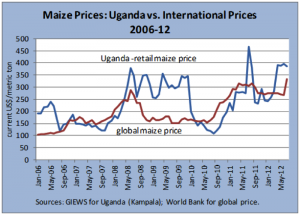Gaming mouse pads generally only have two or three things to offer gamers, namely improved sensor recognition, improved reaction and control, and a larger surface area than standard office mouse pads. The Scythe Precision Gaming Surface, the first product from newcomer Scythe Mouse Pad Company, takes that last feature?size?and dials it up to eleven. It's the biggest mouse pad I've ever seen by far, and that may be reason enough for some folks to buy it. But other than that, there's not a lot else going on.
Design and Features
This thing is huge, measuring 14 by 17 by 0.13 inches (HWD)?that's right, 238 square inches of sleek spandex and foam rubber, an expanse that's a little bit like having a roller rink to yourself. You can just go as far as you please, never worrying about where you are on the mouse pad, because you know it's so big that you probably won't make it all the way to the edge.
The Scythe is significantly larger than the already oversized Roccat Hiro and Razer Goliathus (both roughly 10 by 14 inches), and that's saying a lot. All that material is a tad heavy, as well (7.7 ounces), which is more than an ounce heavier than the Razer Goliathus (6.6 ounces), though not as heavy as the rubber laminate of the Roccat Hiro (10.2 ounces) or the all-metal Razer Ironclad (18.5 ounces).
The Scythe is also very smooth. Covered in 1,200-plus thread count polyester/spandex blend, this cloth-covered mouse pad lets you glide at a good clip?I actually found myself dialing down my DPI to compensate for the speedy movement.
In a lot of ways, the Scythe is very similar to the Razer Goliathus, with a few small but key differences?the Scythe is bigger. A lot bigger. But the Razer Goliathus is better made, with a frame of heavy stitching around the edges to prevent the otherwise inevitable separation of the rubber and cloth, and the subsequent fraying that renders the mouse pad useless. Despite this, you can rest easy, because Texas Duratile (the company behind the Scythe Pad) covers the mouse pad with a lifetime warranty, putting to shame both Razer (180 days) and Roccat (no warranty) mouse pads.
Performance
To test the Scythe, I spread it across my workbench in the PC Labs and used it for over a week for all of my work and gaming. The broad expanse certainly is big, and the resulting freedom of movement is nice, but I never felt hemmed in while using the Roccat Hiro or Razer Goliathus. If anything, the sheer size of the Scythe is overwhelming?not in the sense that I was overwhelmed, but in the sense that this enormous mouse pad covers half my desk.
In day-to-day activities, like Excel and Photoshop, the extra-large surface gave me more than enough room to move. Tested in gaming, the polyester/spandex blend offers a low-friction surface, which lets you zip around as quickly as you please. I personally prefer textured surfaces, but I can't deny that the oversized, low-friction mouse pad let me react quickly, move freely, and play at a high level.
The Scythe Precision Gaming Surface offers only one thing that you won't find offered by other gaming mouse pads, and that is size. Other surfaces, like the Roccat Hiro and the Razer Goliathus offer better tactile control and better construction while still offering the flexibility of a soft mouse pad. If even the large size of standard gaming mouse pads cramps your style, then definitely consider the ultra-large Scythe?but if size isn't an issue, I'd look elsewhere.
Source: http://feedproxy.google.com/~r/ziffdavis/pcmag/~3/a5UxlJjUVhs/0,2817,2417481,00.asp
weather new orleans orcl the hartford illinois primary 2012 michael bay zsa zsa gabor illinois primary



